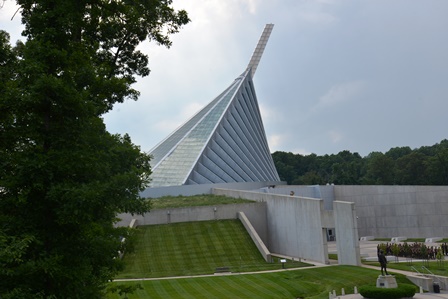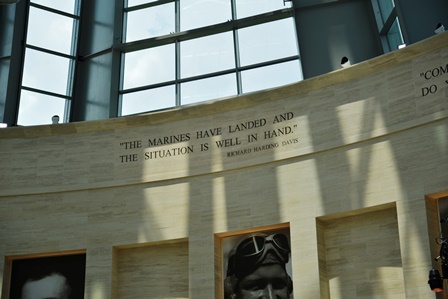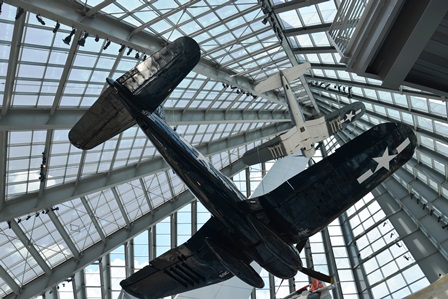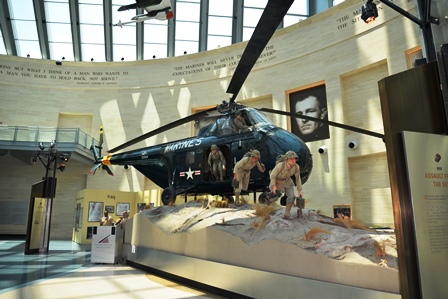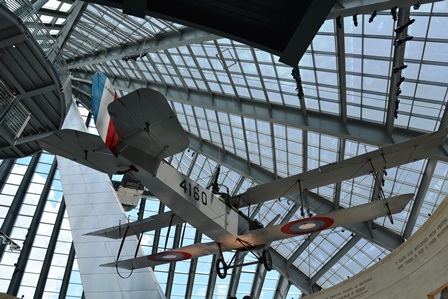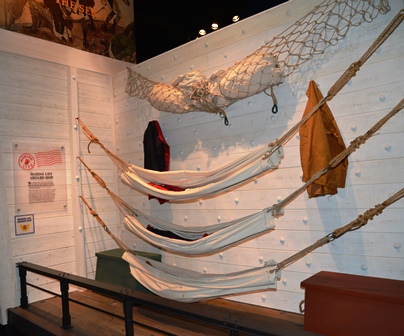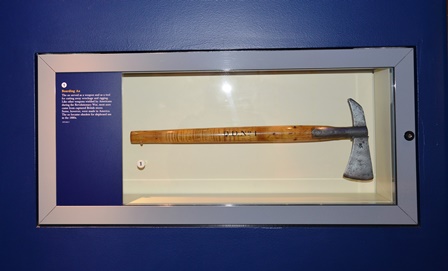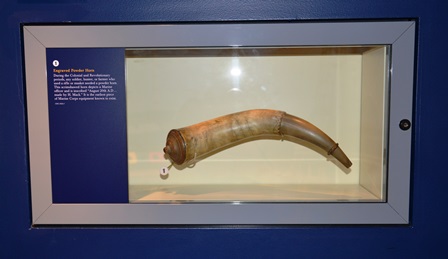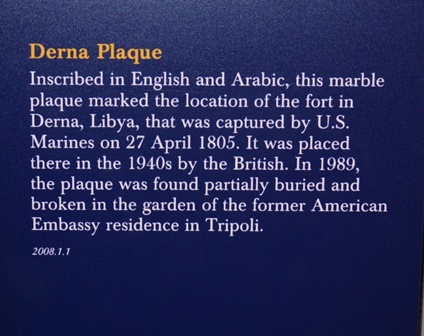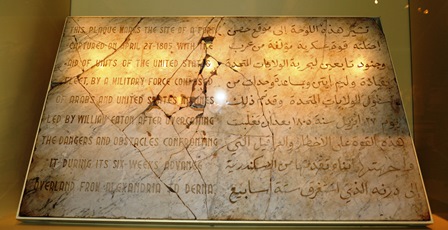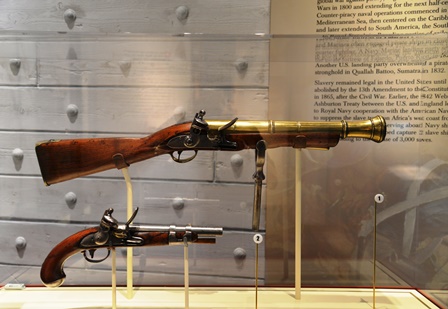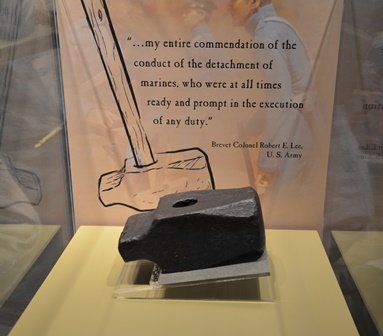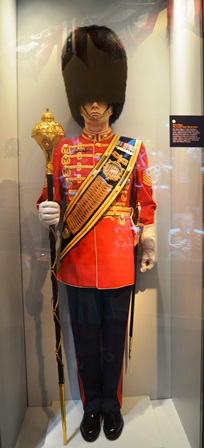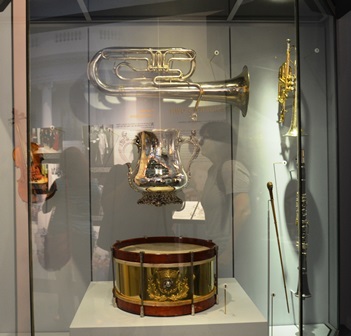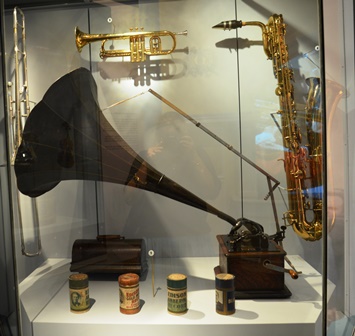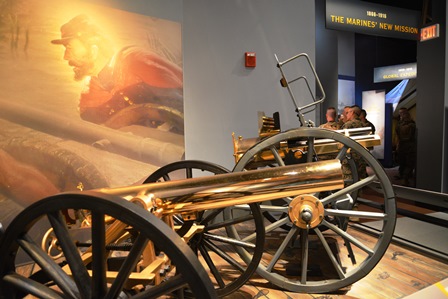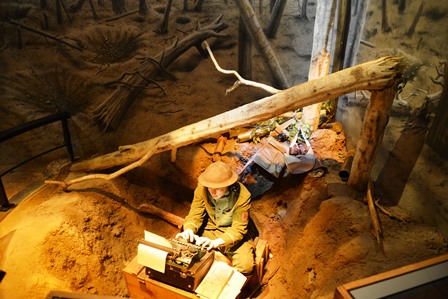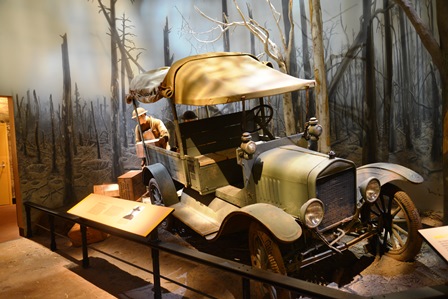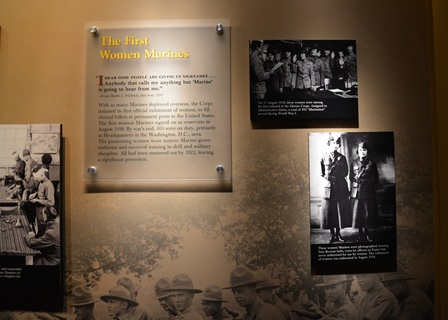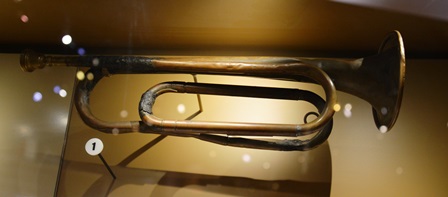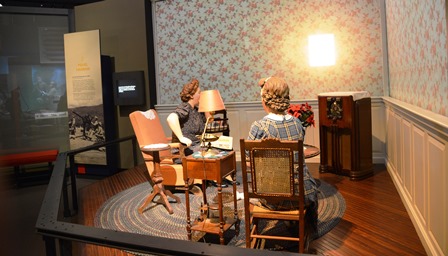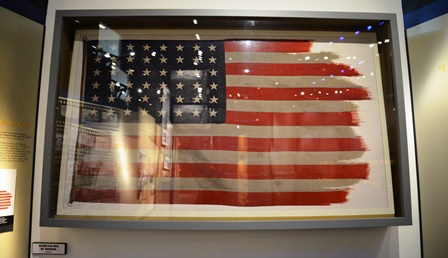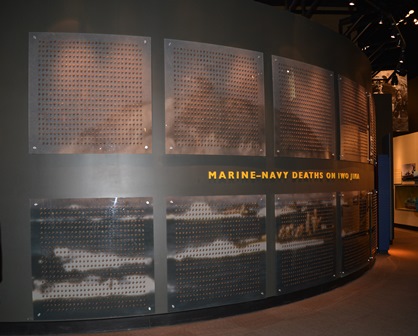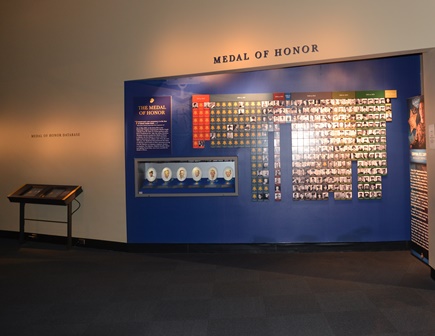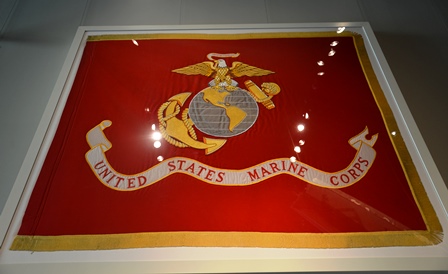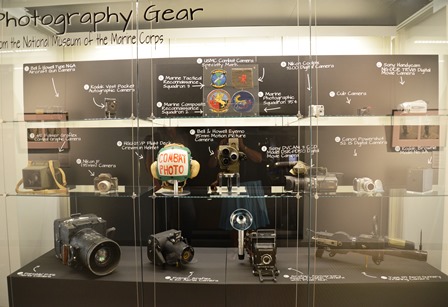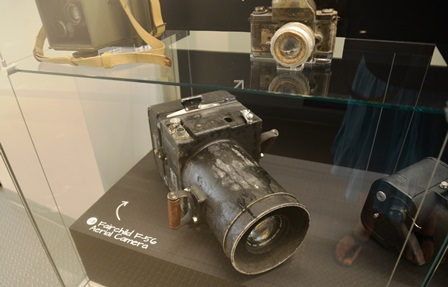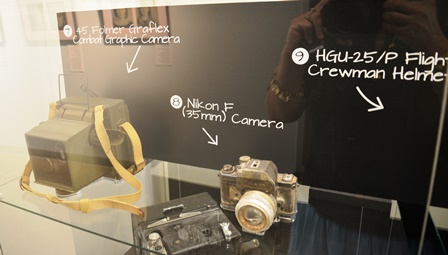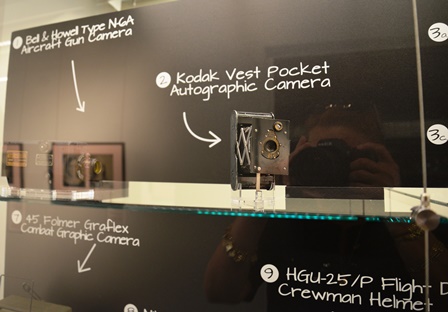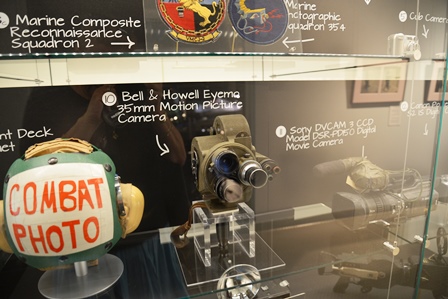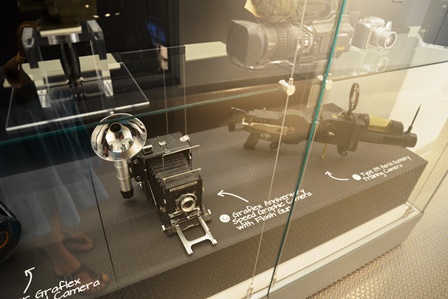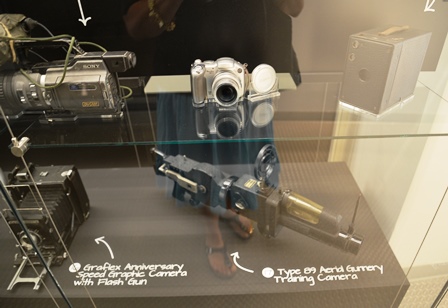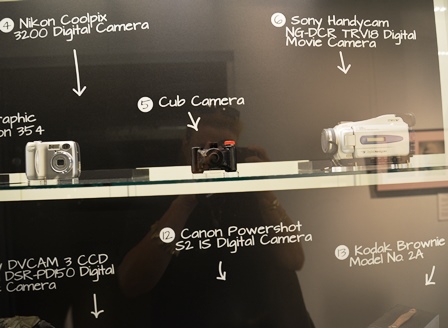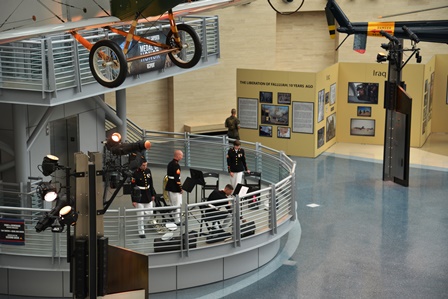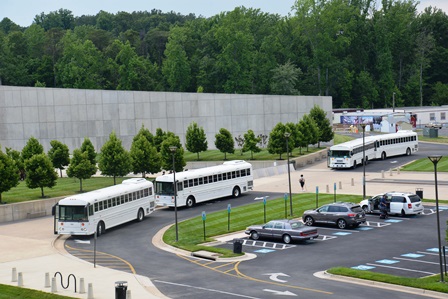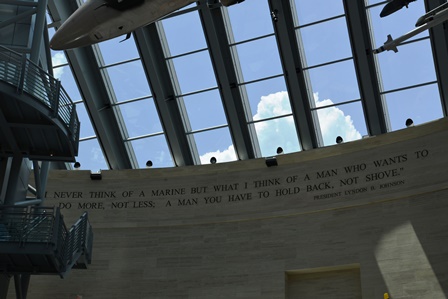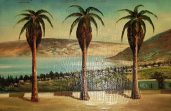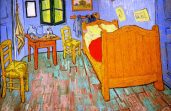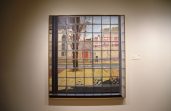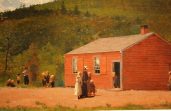National Museum of the Marine Corps
“The terrazzo floor depicts the transition from ocean to shore, representing the Marines´ mission of amphibious assault. Soaring up from the floor is a 210 foot stainless steel spire suggesting the raised barrel of an artillery piece, a bayoneted rifle or an drawn Mameluke sword. Anchoring the rear of the gallery, a three level observation deck and elevator tower, resembling a ship´s superstructure, reminds visitors of the strong Navy-Marine Corps partnership. Portraits of eight Marines look over the area and the surrounding travertine walls are engraved with evocative quotes.”
This post will not be able to do justice to either this museums excellence or the thrill and genuine pride and gratitude, which I experienced when touring its halls.
The National Museum of the Marine Corps, located in Triangle Virginia, right outside of Washington D.C. should not be missed, when traveling to the nation’s capital. The Museum is very well laid out and the exhibits offer something for all ages. It is also a place where many active duty, as well as, retired Marines can be found, creating in one, a feeling of pride and gratitude, as you walk through the chronologically laid out halls. When you leave, make sure to stroll through the Memorial Gardens outside, and venture into the Chapel.
I will be sharing several portions of text from their website, which also offers you an opportunity to take a virtual tour, which I highly recommend.
The Corsair with superior speed and firepower changed the course of air combat in World War II; the Japanese called the plane The Whistling Death.
A Sikorsky HRS-2 Helicopter
The Curtiss Jenny
As you leave the main entrance hall, you will begin a journey through the history of the Marines, which details the origins and need for the organization as well as military engagements, tools, weapons, and its esprit de corp.
“‘Four or five frigates will do the business without any military force.’”
~ British Prime Minster Lord North to the House of Commons, 1774~
“The American Colonies of the 1770’s drew their livelihood from the sea. Cities clustered on the coast — Charleston, Savannah, Wilmington, and across New England — suffered from naked vulnerability to the powerful Royal Navy. A generation of seasoned American seafarers provided a pool from which a struggling new nation drew sailors and Marines to launch an emergent naval services. Their achievements on land and sea proved instrumental to the eventual triumph of the patriot cause.”
“‘Landsmen’ – soldiers disposed toward sea service who formed armed boarding parties to serve on board sips – had long been a tradition in maritime nations. These musket-wielding sailors evolved into ‘Marines.’ The Continental Marines of the American Revolution, patterned after their British and Dutch forerunners, proved their mettle in sea battles that won a name for the fledgling American Navy. Despite heavy casualties, Marines staged two difficult ambitious assaults against British forces at Penobscot Bay, Maine.”
“Congress disbanded the Continental Navy and Marines after the American Revolution, but emerging threats to the nation’s maritime trade prompted a quick restoration of both services. In 1798, Congress created the Navy Department and authorized a battalion to be called the Marine Corps. Public hostility toward a large standing army made seaborne light infantry a tolerable alternative. Within months, U.S. Marines manned new frigates in an undeclared war against marauding French ships.”
The Boarding Ax was both a weapon and a tool, was no longer used after 1880.
This Powder Horn is the oldest piece of Marine equipment known to exist; it is from the Colonial and Revolutionary time period.
From the Shores of Tripoli
“This plaque marks the site of a fort captured on April 27 -1805 with the aid of units of the United States Fleet, by a military force comprised of Arab and United States Marines led by William Easton after overcoming the dangers and obstacles confronted it during its six-weeks advance overland from Alexandria to Derna.”
The Derna Plaque
Swivel Gun and Model 1813 S. North Navy Pistol
“In October 1859, the abolitionist John Brown sought to incite a slave uprising by seizing weapons and hostages from Harpers Ferry arsenal. The rapid deployment of Lieutenant Israel Greene and his Marines from the Washington Barracks provided an immediate storming party. Charging the building under fire with a battering ram, the Marines cut down the defenders and rescued the hostages unharmed. Few Marine operations in the ensuing Civil War were as professionally executed.”
Sledge hammer used on October 18, 1859, under the command of Robert E. Lee, at Harpers Ferry
The Marine’s Hymn
“From the Halls of Montezuma,
To the shores of Tripoli;
We fight our country’s battles
In the air, on land, and sea;
First to fight for right and freedom
And to keep our honor clean:
We are proud to claim the title
Of United States Marine.
Our flag’s unfurled to every breeze
From dawn to setting sun;
We have fought in every clime and place
Where we could take a gun;
In the snow of far-off Northern lands
And in sunny tropic scenes;
You will find us always on the job
The United States Marines.
Here’s health to you and to our Corps
Which we are proud to serve;
In many a strife we’ve fought for life
And never lost our nerve;
If the Army and the Navy
Ever look on Heaven’s scenes;
They will find the streets are guarded
By United States Marines.”
~ Author Unknown ~
“The Marines’ Hymn bit so deeply into my memory that I could not get it out of my head.”
~ British Prime Minister Sir Winston Churchill, reviewing the Marine Brigade, Iceland, 1941 ~
“The full origins of the stirring Marine anthem remain shrouded in mystery. The melody dates from 1859 Jacques Offenbach opera Genevieve de Brabant. The earliest printed version of the familiar words penned by an unknown author, appeared on a late 19th Century recruiting poster. Commandant John Lejeune took out a copyright covering the traditional first three stanzas of the hymn in 1929. General Thomas Holcomb acknowledged the burgeoning Marine air arm in 1942 when he authorized adding “in the air” to the lyrics. ‘The Old Hymn’ is the spirit of the Marines, said on veteran. Marines invariably stand in respect at the hymns first note.”
“The Drum Major of ‘The President’s Own’ United States Marine Band is the senior enlisted member of the organization. He directs the band in its ceremonial commitments, trains new members in military subjects, and is responsible for the band’s uniform appearance, ceremonial drill and military decorum.”
“Your marches are like the American people – full of fire, brilliance, and sentiment.”
~Queen Alexandra of England to Sousa, 1901 ~
John Philip “Sousa, the son of a Marine bandsman, became the Director of the Marine Band in 1880 at the age of 25. As Bandmaster under five presidents he turned the Marine Band into a nationally recognized hallmark. . .”
John Philip Sousa’s violin, Loving Cup presented Sousa in 1886, his Baton, and Cornet from 1919, manufactured in Cleveland Ohio
Edison Phonograph 1906 and Trumpet 1927
What I love about this picture are the Marines to right, in the rear, who are intensely listening at the history, which they are a part of, is being explained to them – okay, cool cannon as well.
A Combat Correspondent, hard at work, on the front lines of World War I, in France
“‘The people . . . ran out & yelled ‘The Americans are coming’ . . . . Children were yelling ‘Vive l’Amérique.’”
~ Private J. E. Rendinell 6th Marines, May, 1918 ~
“More than 2,600 Marines sailed from New York for France on 14 June 1917, only 10 weeks after America entered the war. The first detachment landed at St. Nazaire on 27 June, the vanguard of a force that would number about 31,500 Marines by war’s end. Though the bitter winter of 1917-1918, they guarded lines of supply and trained for combat in camps across the French countryside. From March to May 1918, a stint in the lines near blood-soaked Verdun introduced Marines to such unpleasant realties of trench warfare as poison gas attacks, mud, and lice.”
A Model T Truck
“The American Expeditionary Forces (A.E.F.) were the first truly motorized force ever fielded. It is estimated that of the 60,000 vehicles that saw service with the A.E.F., more than 15,000 were Model T Fords. The Marines were authorized no vehicles prior to their departure for France, except for a model T Ford donated to the 6the marines by Mrs. Elizabeth Pearce, Mrs. Charles Childs, and a Miss Wilcox. It performed beautifully during battle, carrying ammunition and supplies to the front lines and evacuating the wounded. the vehicle displayed her is similar to the “Elizabeth Ford” and carries markings of the original truck.” Can you imagine anyone today donating anything to are armed forces?
“I hear some people are giving us nicknames . . . . Anybody that calls me anything but ‘Marine’ is going to hear from me.”
~ Private Martha L. Wilchinski, letter home, 1918 ~
“With so many Marines deployed overseas, the Corps initiated its first official enlistment of women, to fill clerical billets at permanent posts in the United States. The first women Marines signed on as reservists in August 1918. By war’s end, 305 were on duty, primarily at Headquarters in Washington, D. C., area. The pioneering women wore austere Marine-green uniforms and received training in drill and military discipline. All had been mustered out by 1922, leaving a significant precedent.”
“Air Raid, Pearl Harbor – this is no drill!”
~ Radio Alert, 7 December, 1941~
Bugle from Pearl Harbor
Those at home learning about the attack on Pearl Harbor
The Second Flag raised at Iwo Jima
Each star symbolizes a Marine or Sailor who lost their life at Iwo Jima
Those who have been awarded the Medal of Honor
Flag recovered from Peter Murphy, Council of the Commandant, Marine Corps, Office, at the Pentagone, after 9-11 attacks.
I of course loved this exhibit
These are names we know
Some show a bit of ware
But all testify to the importance of capturing history
On the walls surrounding this exhibit were photographs taken by war correspondents
Yes, I am do apologize for my reflection in so many of these images, but I cannot resist sharing these images with you, even if I appear with them.
I would have loved to be able to talk with the men and women who used this equipment.
I was not permitted to photograph the pictures
So often, we think of museums as places which house the past, an honorable and noble task, as I believe it is imperative that we not only remember the past, but that we leave behind, for those yet to come, a clear record of our achievements and failures, of our struggles and knowledge gained through conflicts and successes, that our lives may serve as building blocks, on which future generations will continue to advance our nation and all of mankind. If this museum accomplished nothing more, it would be a worthy endeavor, but the National Marine Corps Museum is not only filled with past glories, its halls and grounds are permeated with life!
You can see the pride and joy which the Marines, their families, and fellow Americans take in sharing in this history and embracing the call to duty, which it proclaims, ensuring our future. God bless America.
Buses bringing Marines to the Museum
“I never think of a Marine, but what I think of a man who wants to do more, not less; a man you have to hold back not shove.”
~ President Lyndon B. Johnson ~

